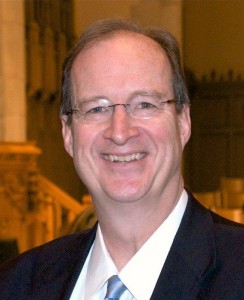I lived in Chicago, for 17 years. One of the local icons was The Second City, a comedy institution of mystical reputation.
You might know The Second City as the launching pad for many great comedic talents who first found their way to Saturday Night Live and then to cinema stardom. John Belushi. Gilda Radner. Mike Myers. Bill Murray. Tina Fey. And many, many more.

People going to a Second City show for the first time often expect a version of a Saturday Night Live broadcast, but in reality, it’s something much different, and, in my mind, something much better. Saturday Night Live offers scripted segments with familiar characters. A Second City performance includes characters, though ones you’ve never seen before. And while it is lightly structured, it is also based largely on the practices of improvisation. At various points in the performance, audience members shout out concepts (a wedding, an interview) or characters ( a police officer, a cheerleader). The cast takes this input and crafts, usually, a clever and hilarious sketch. I’ve never laughed harder than at a Second City performance.
I have therefore become intrigued by the concept of improvisation. Bear with me. The best improvisers are not necessarily the funniest or cleverest. What they are is intuitive and collaborative. They understand themselves to be part of a team, and that their primary job is not to look good, but to maintain the premise of the bit and help all of the cast look good.
In her great book Bossypants, Tina Fey writes that the first two rules of improvisation are “say yes” and “say yes, and.” To say “yes,” Fey writes, means that you respect what your partner has started. She continues: “YES, AND means don’t be afraid to contribute. It’s your responsibility to contribute. Always make sure you’re adding something to the discussion. Your initiations are worthwhile.”
Here’s the point: To address academic challenges in our region, and in particular the effects of high concentration poverty, will require a “yes, and” approach. To say “no” to anything, or even to say “yes, but” right now hinders initiative and contribution.
Great Schools for All is pushing a voluntary network of inter-district magnet schools that will allow students to move across borders—city and suburban—to experience great learning. We believe, based on our extensive research and experiences in Raleigh and beyond, that by reducing concentrations of poverty, students and families will move out of poverty, even as they continue to live in the communities where they have lived. Those same communities will also experience the benefits of this socio-economic integration.
That’s the “yes.” But remember the rules of improvisation. We, the GS4A team, are certainly trying to remember them. We know there are proposals in the community that are gathering significant and warranted attention, particularly those related to the work of the Rochester-Monroe Anti-Poverty Initiative.
The “and” of “yes, and” becomes placing the GS4A proposal adjacent to enhanced urban-suburban efforts, and potential suburban-urban efforts. It places our proposal adjacent to the “Beacon school” concept (or “anchor school,” or “community school”) that has a strong neighborhood school in place surrounded by a variety of important services and resources. It places our proposal adjacent to the RCSD’s grant to do pilot efforts with Brighton and West Irondequoit. Yes, and.
We need all the good ideas we can get, and we know that no one idea, even the GS4A proposal, will address every challenge and solve every problem.
Tina Fey writes that in improvisation “there are no mistakes, only opportunities.” We should not be daunted by the potential of mistakes in order to avoid doing something. Rather, we should be buoyed by the potential for creativity and innovation that collaboration offers.
What would it look like for us to say “yes, and” to the ideas before us, for the sake of children, our most precious resource?
